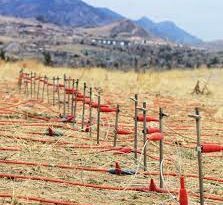Setbacks of Forest and Wildlife Resources
Human beings have seriously encroached into many wildlife habitats and permanently occupied lands formally inhabited by wild animals (Ijeomah and Aiyeloja, 2010).
This has led to wanton destruction and emigration of wildlife species (part of our national heritage) to more stable ecosystems.
Through creation of wildlife refuges in form of game reserves and national parks rural inhabitants were forced to vacate part of their acquired life dependent land and other part of environment for wildlife species, in many cases without compensation (Adetoro et al., 2011).
1. Drought
Prolonged absence of rainfall impacts negatively on forest and wildlife resources. Plants such as shrubs, herbs and trees will lack water which it needs for its growth.
This will lead to poor shelter and cover for the wildlife which they need for their survival, therefore necessitating the migration of wildlife.
2. Flood
It is commonly believed that forests are necessary to regulate stream flow and reduce runoff, and to some extent this is true. But, in reality, forests tend to be rather extravagant users of water, which is contradictory to earlier thinking (FAO 2003).
Read Also: Land Pollution and Composition of Land Pollution

3. Erosion and sedimentation
It is widely perceived that forests can control erosion and sediment processes. While forest cover does tend to check erosion, it is not the tree canopy that is directly responsible for this; rather it is the undergrowth and forest litter.
4. Deforestation
Deforestation is a conventional environmental challenge substantially affecting the resilience and distribution of forests across different boundaries.
It is simply defined as the loss of trees’ cover usually as a result of forests being cleared for other land uses (Gorte and Sheikh, 2010). In the drier areas of the tropics, fuel wood gathering can be a major cause of deforestation and degradation of the forest (Chakravarty et al, 2014).
5. Excessive Hunting
According to the International Union for Conservation of Nature (IUCN), 1169 of the world’s 4556 assessed terrestrial mammals (approx. 26%) are listed as threatened with extinction.
Excessive hunting refers to unregulated hunting that is indiscriminately carried without authorization or with inappropriate hunting equipment.
Read Also: Seed Germination and Dormancy to Plant Growth and Development
In summary, the setbacks of forest and wildlife resources can be curbed with more education to the local dwellers around the forest or conservation.


